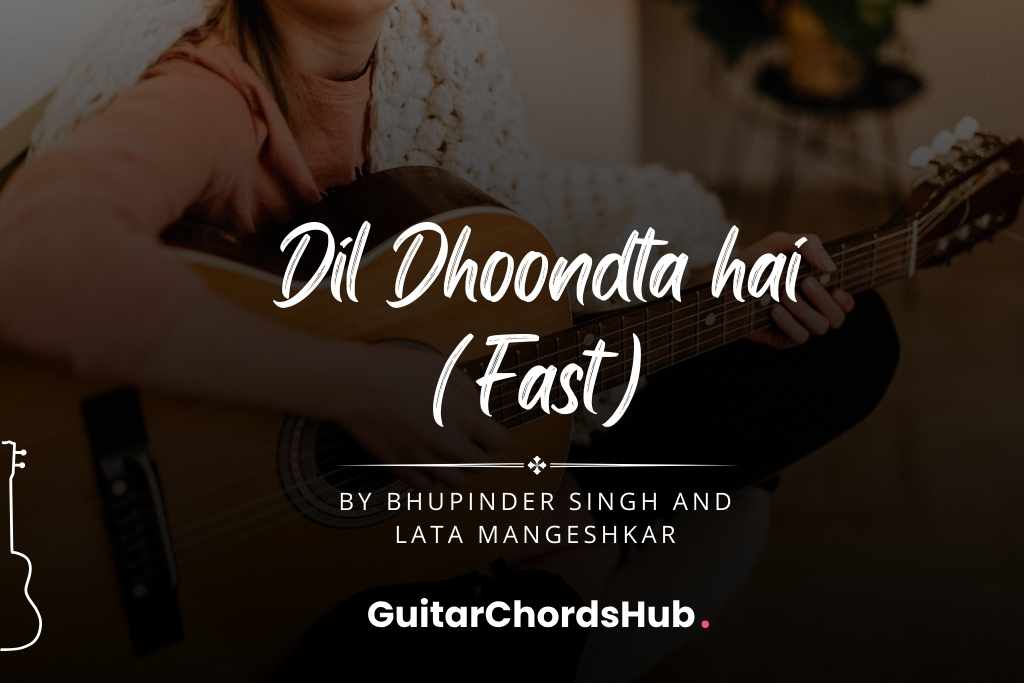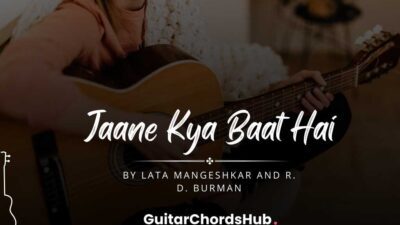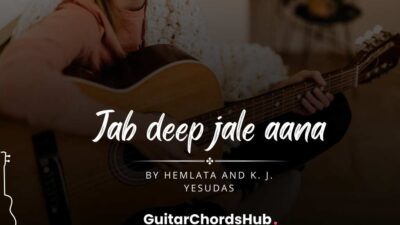By Bhupinder Singh and Lata Mangeshkar
Introduction:
Bhupinder Singh and Lata Mangeshkar’s “Dil Dhoondta hai (Fast)” is a classic song expressing deep longing and nostalgia. While the tempo is typically slow, this guide focuses on a faster arrangement, presenting a slightly more challenging but rewarding playing experience for intermediate to advanced guitarists. The key is D# minor, which uses some less common chords.
Guitar Chords for Dil Dhoondta Hai (Fast Version):
This version utilizes D#m (D# minor), F#, C#, A#, G#, and Fm (F minor).
(Verse 1)
[D#m] [F#]
dil dhundata hai, phir wahi
[C#] [D#m]
fursat ke raat din
[C#] [D#m]
baithe rahe tasawwoor-ye-jana kiye huye
(Verse 2)
[A#] [G#] [Fm] [A#]
jaadon ki narma dhup aur aangan me let kar
[G#] [F#] [G#] [D#m]
aankho pe khinch kar tere aanchal ke saaye ko
[D#m] [C#] [D#m]
aundhe pade rahe kabhee karawat liye huye
(Verse 3)
[A#] [G#] [Fm] [A#]
yaa gamreeyon kee raat jo purawaiyan chale
[G#] [F#] [G#] [D#m]
thhandee safed chaadaro pe jaage der tak
[D#m] [C#] [D#m]
taaron ko dekhate rahe chhat par pade huye
(Verse 4)
[A#] [G#] [Fm] [A#]
barfeeli sardiyon me kisi bhi pahaad par
[G#] [F#] [G#] [D#m]
waadi me gunjati huyi khamoshiyan sune
[D#m] [C#] [D#m]
aankho me bheeege bhige se lamhe liye huye
Tips for Playing Dil Dhoondta Hai (Fast) on Guitar:
- Chord Changes: This faster arrangement demands precise and quick chord changes. Practice transitions between D#m, F#, C#, A#, G#, and Fm until they are fluid and clean. Use a metronome to improve timing.
- Strumming Pattern: A fast strumming pattern is essential for this version. Experiment with different patterns to find one that matches the song’s energy and rhythm. A consistent strumming pattern is key to the song’s driving feeling.
- Fingerstyle: Consider exploring fingerstyle techniques to add complexity and depth to the performance. This is suitable for more advanced players.
- Tempo: Maintain a consistent, brisk tempo throughout the song. A metronome helps here.
Conclusion:
Playing “Dil Dhoondta hai (Fast)” at a faster tempo requires more skill and practice than the typical slower rendition. This arrangement rewards dedicated guitarists with a more compelling and dynamic performance that captures the song’s underlying energy.



